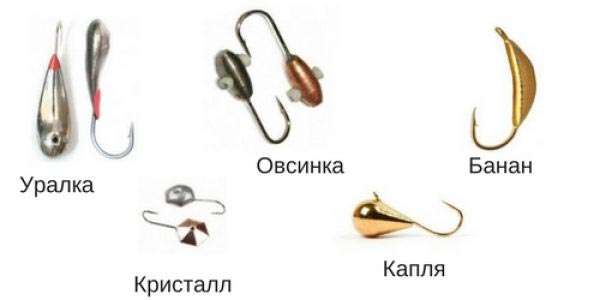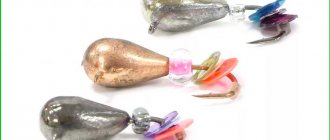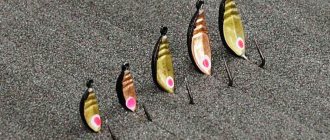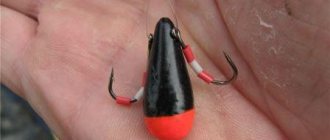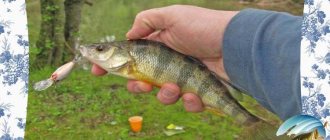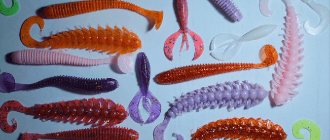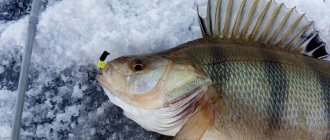Advantages
The fundamental differences between fishing with a reelless jig and classic winter fishing lie in the method of influencing potential prey. In the first case, the main goal is to visually and tactilely deceive the fish; this requires certain skills and mastering the secrets of winter fishing with a reelless reel. But the complexity of the process is compensated by its efficiency throughout the winter period and in any body of water.
A huge variety of equipment variations simplifies targeted fishing for a specific type of fish, in particular large predators.
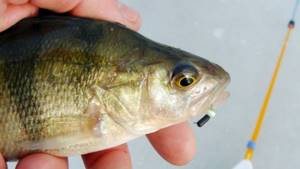
The jigs themselves can be made independently; they are usually cast from lead or machined from pieces of brass. This will not only save money, but also give the fishing process an even more creative component.
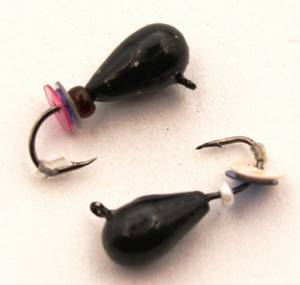
In the case of traditional bait, there are fewer requirements for the skills and actions of the fisherman himself, but the range of fishing opportunities is much lower.
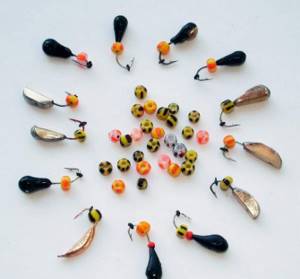
Is it possible to catch big fish with a reelless reel?
To prevent the trophy from falling through the fishing line, skilled fishermen use a homemade, customizable clutch.
One solution would be to place fluoroplastic spacers on both sides under the clamping bolt.
A more economical solution is the interaction of the nod and the handle, reminiscent of a guitar in shape. A fishing line of a certain thickness is wound around the waist. This is important, because the nod is adjusted to exactly this diameter. When catching large fish, the nod bends and tightens the thread.
Preparing gear
The classic version for ice fishing – the “balalaika” – is suitable as a fishing rod. In fishing rods of this type, the reel itself is built into the handle, so an important stage of preparation will be to ensure free movement of the line. Lubricating with regular lard will help with this.
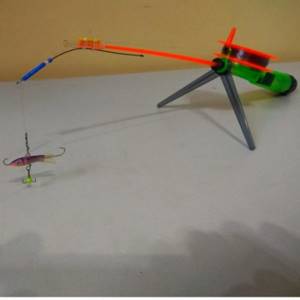
When choosing a fishing rod, you should be guided by the convenience for your specific hand. It is important to pay attention to the ratio of weight and reliability. All this will allow you to use all tactical maneuvers and “play” with a jig without unnecessary discomfort.
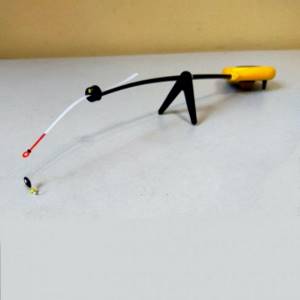
The fishing line is selected as thin as possible, but at the same time strong, sinking in the water and capable of straightening in it. With a thick line it will be problematic to follow the technique of winter fishing with a reelless reel.
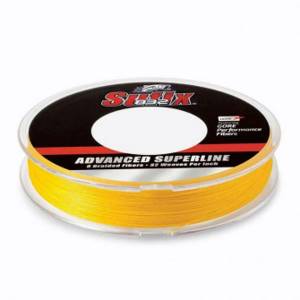
You can make a nod with your own hands from any available material - strong wire, plastic bottle, spring. Although for reelless fishing it is not a mandatory element of equipment
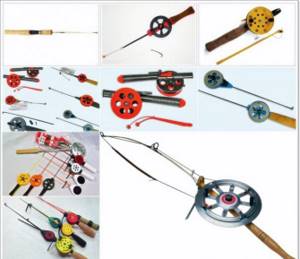
Nail cubes and nail balls
According to generally accepted opinion, nails with large balls are good working reelless jigs for roach. Their peculiarity is the presence of a heavy element on the hook, which taps the forearm and body of the bait when playing, and also attracts fish with color. Some fishermen believe that such baits are the best reelless baits for roach. Recently, a cat's eye bait (or a vigorous eye) has become a popular bait for roaches. The jig received this name because of the large ball on the hook of a characteristic green color.
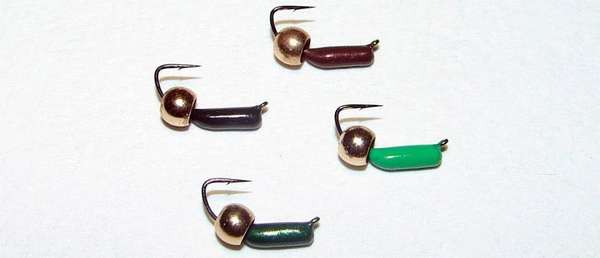
Fishing tactics
The tactical component of fishing varies significantly depending on the winter period and the characteristics of the reservoir. Thus, at the beginning of the winter period, it will be effective to fish a wide area of water and move from place to place.
This is the most favorable time for fishing, because during this period the fish are still active and readily respond to any game and bait. But in late winter, the best solution would be a persistent approach to one specific place. The final tactic will depend on the target fish species.
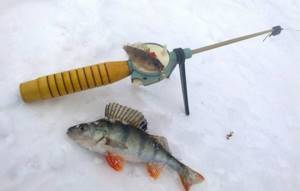
Where to look for perch on the first ice
Experienced fishermen note that sometimes the perch is “located” completely by accident. Although this is more luck.
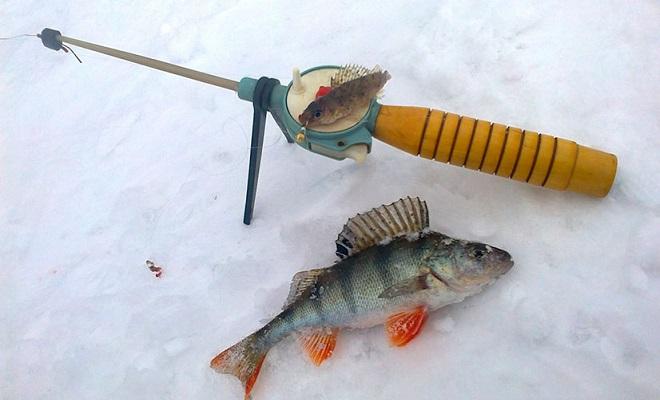
If you want to be sure to catch this fish, then you must adhere to certain rules:
- Particular attention in reservoirs is paid to those places where there are flooded trees, multiple snags, reeds or algae. Perch is found mainly in rivers with a sandy or rocky bottom.
- No less interesting can be places with multiple holes and dips at the bottom.
- Areas where springs flow or are adjacent to other rivers are some of the most favorite places for perch. The reason for this love is simple - there is always oxygen in abundance here, even in the middle of winter.
- If there is some quiet and secluded place on the river, you can assume that there is fish there.
- On the last ice the perch begins to move into bays and holes.
- During the thaw period, fishermen should move closer to the shore, to those places where they can find fish even at the beginning of the first ice.
Experienced fishermen note that it is not uncommon for large specimens to swim close to the shore at the end of winter. On sunny days, it is possible to spot fish by the dusty cloud that rises from the bottom. At this moment, the perch tries to find larvae or other insects in the mud. If this is the case, then it is better to use a bullhead for fishing.
Important! When the reservoir begins to become cloudy (which happens with the arrival of spring), the fish goes to where there is clean water, so there is no need to be surprised why there is no bite.
Roach
The most tempting thing for fans of winter fishing with a reelless bait was the roach. The most active period for her is the last ice. Not all fishermen are deterred by its unreliability, which adds more work to rescuers in the spring.
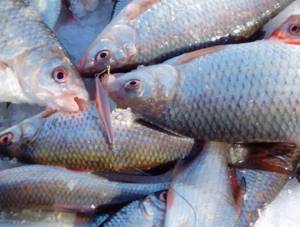
Roach responds to almost any variety of jig, the main thing is that the color is brighter. There are also no special requirements for the playing technique, because this type of fish does not have a specific character; there are both active and passive, cautious individuals.
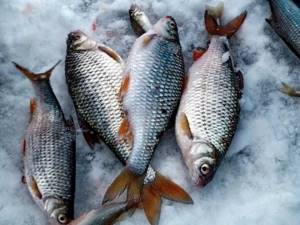
Experiments on equipping a reelless reel with additional elements, such as beads, chains, wings, etc., are suitable for roach fishing. The fish will definitely appreciate this.
Second first ice
The Volgograd “penguins” are the luckiest because after they open the season of first ice in the floodplain, after some time ice appears on numerous reservoirs. These are three reservoirs of the Volga-Don Canal - Karpovskoye, Varvarovskoye and Bereslavskoye. Tsimlyanskoe rises much later - due to its size. And, of course, the Volgograd Reservoir, which we call “the sea”. Each reservoir has its own characteristics of perch fishing. On Karpovsky it is often caught on a grassy stretch or on a long shallow formed by an old railway.
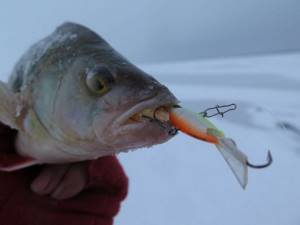
Owner placed the second tee, but not for long
I was on Bereslavsky less often and most often I caught perch not near the dumps, but also on a flat table that goes around the old river bed. Why exactly here - I don’t presume to judge. As soon as I move towards the drop-off, small perch begin to bite. I go back to the table - the bites are becoming less frequent, but decent specimens are falling in. It was on Bereslavka that I learned to catch large perch in mid-water.
True, at that moment I did this with the help of a rather large-sized reelless “Devil”. But all my comrades fished exclusively with balance beams - and confirmed my observations and guesses. Perhaps it was with the “rewinder” that I was able to figure this out, since in the search mode, usually within 3 to 5 control runs in one hole, the bait rises above its own head a couple of times. This is rarely done with a balancer.
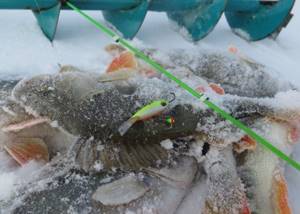
Tee with a drop is still holding
And on Rybinka, let’s say, I saw that they were fishing in different horizons. I have never seen such a fishing technique in our country. Usually everyone fishes near the bottom, occasionally raising the fishing rod to eye level. I found the perch at exactly half the water, i.e. at a depth of 4 - 5 m, I reeled in about two meters, and just walked along the already drilled holes. I go through it once, fishing in the bottom layer, then I fish these same holes at half-water - and I get the long-awaited bites!
On reservoirs the perch goes a little deeper than on eriks and lakes. There are, of course, pure perch shallows, on which the balance tends to stick into the ice when swung. But more often the average fishing depth is from two to six meters.
Ant and nymph
These are classic rewinders that have proven themselves over years of practice. Many fishermen prefer these baits. Thanks to their thicker upper part (and heavier weight), these reelless lures have a nodding action that is attractive to roaches. Active fish do not refuse them; beginners are recommended to start learning the basics of baitless fishing with these baits.
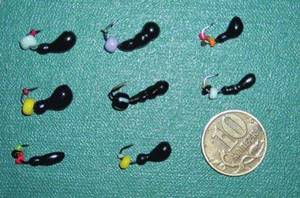
Classic jigs for rewinding
Catching roach in winter with a reelless bait is also done using ordinary baits that have long been tested by anglers. Uralkas, oats, droplets, cloves, poles - all this is successfully used for baitless fishing, it’s just that instead of bloodworms, the hooks are equipped with artificial attracting elements. A heavy reelless zebra mussel for catching large roach at depth also copes with this task. According to many fishermen, these are the best reelless reelers, since they have already shown good results over many years.
